接口的声明
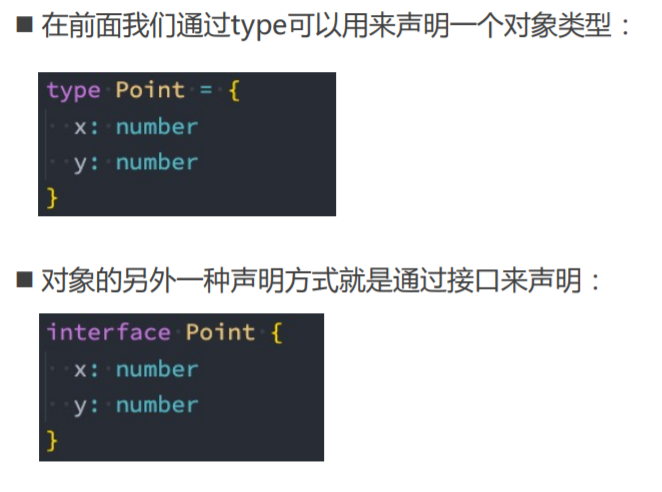
可选属性
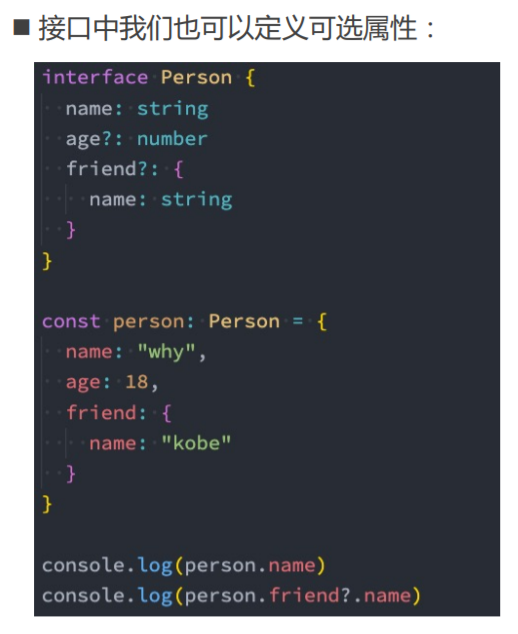
只读属性
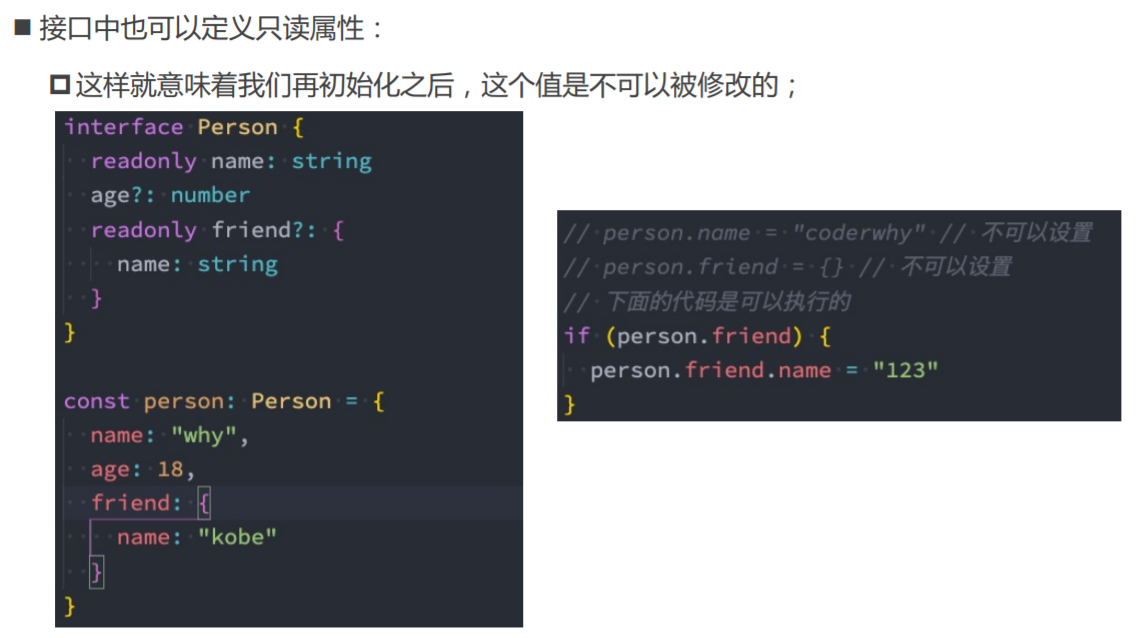
索引类型
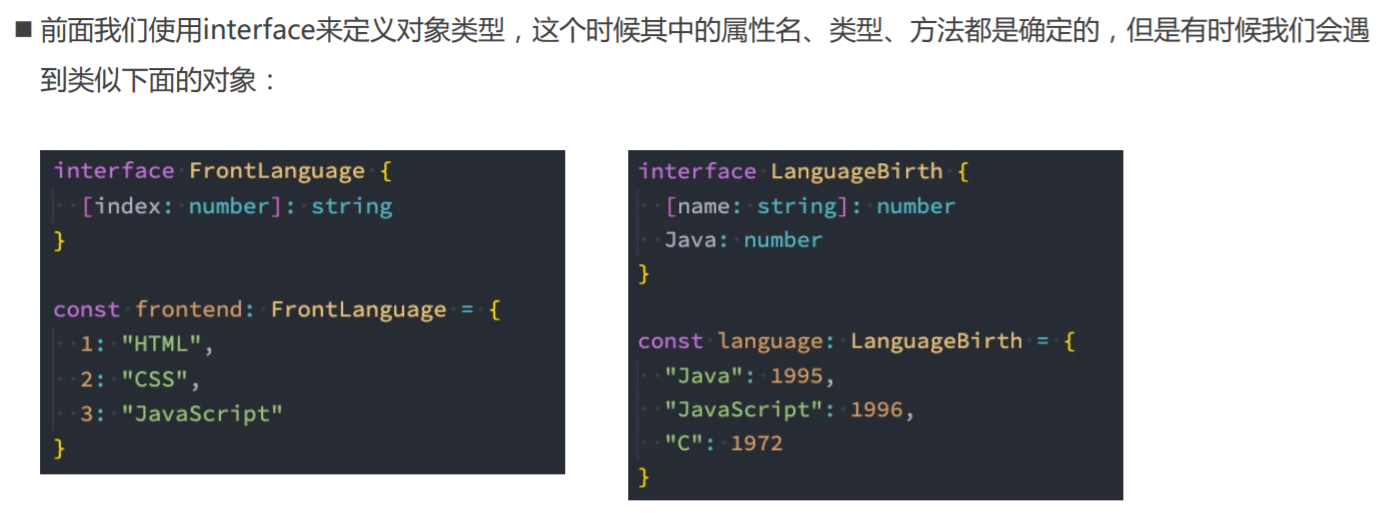
函数类型
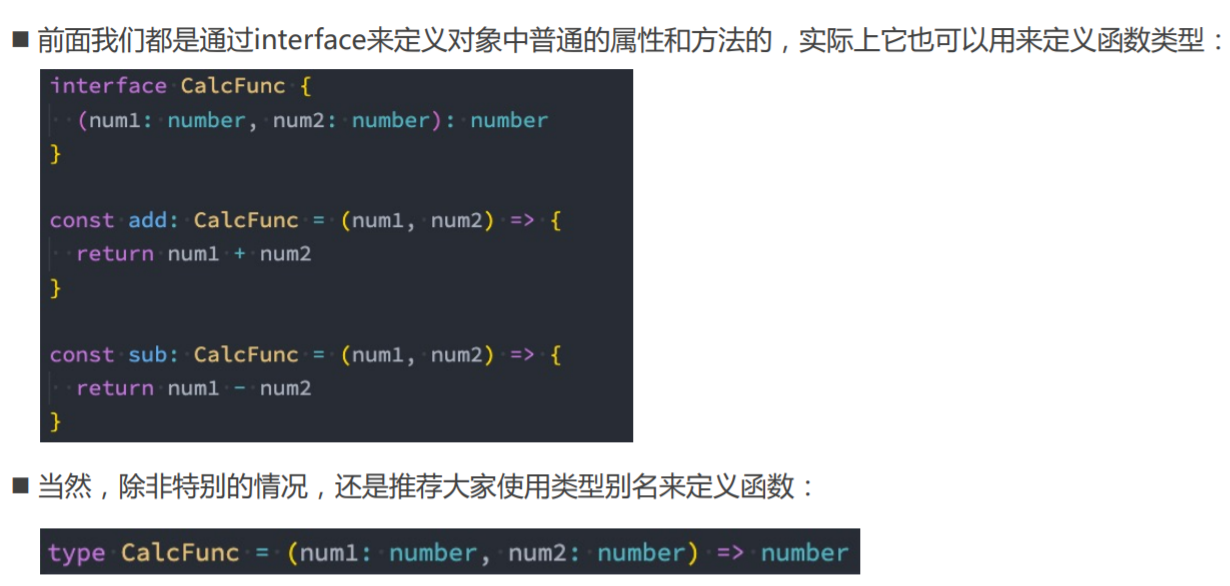
接口继承
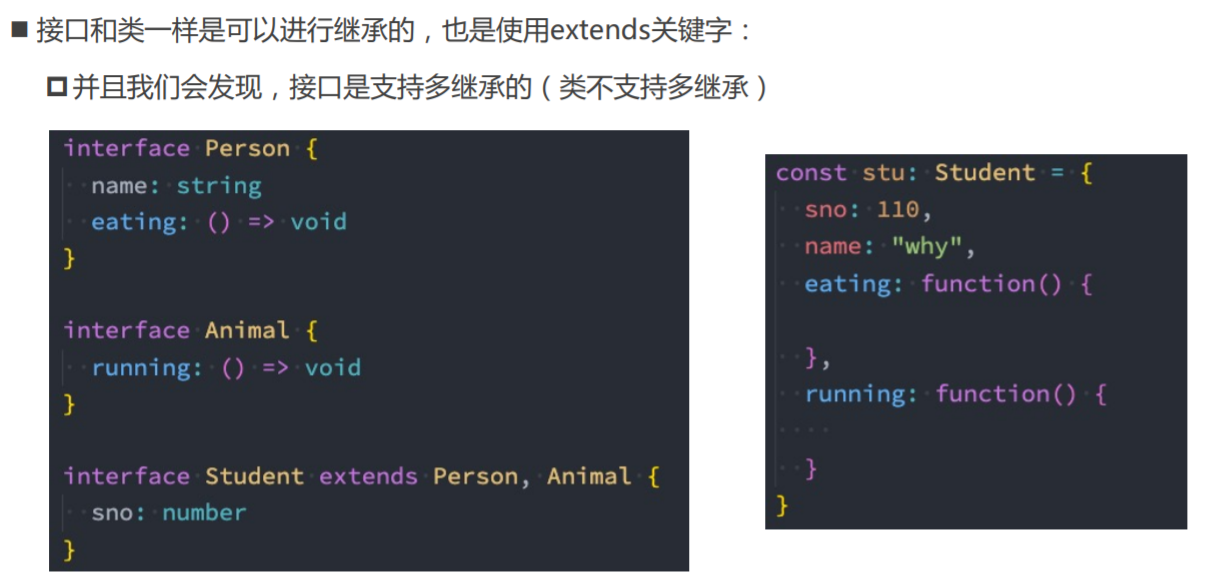
接口的实现
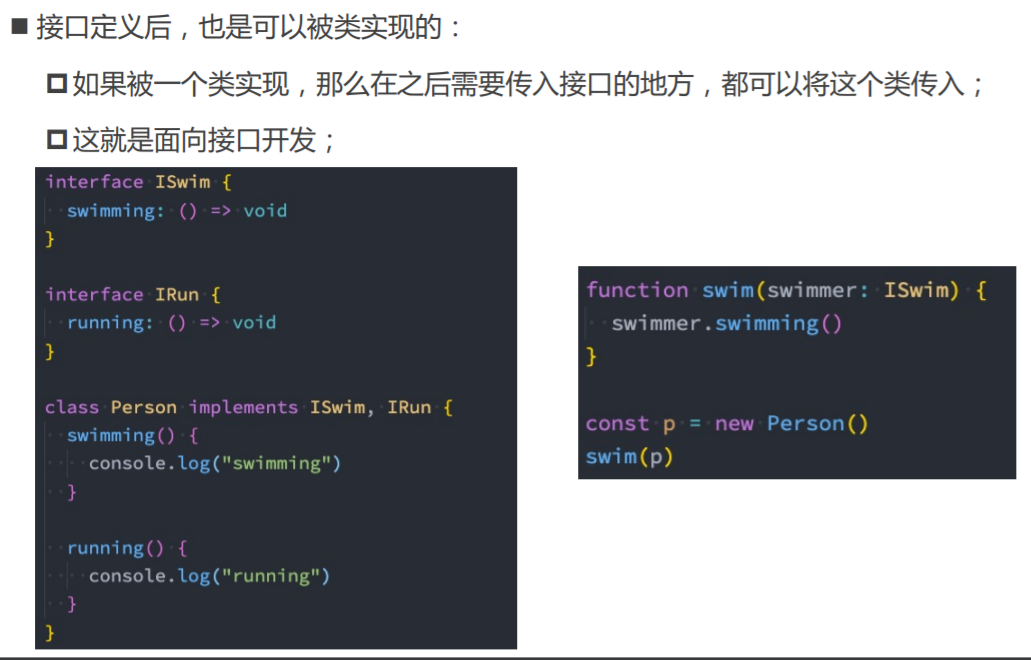
交叉类型
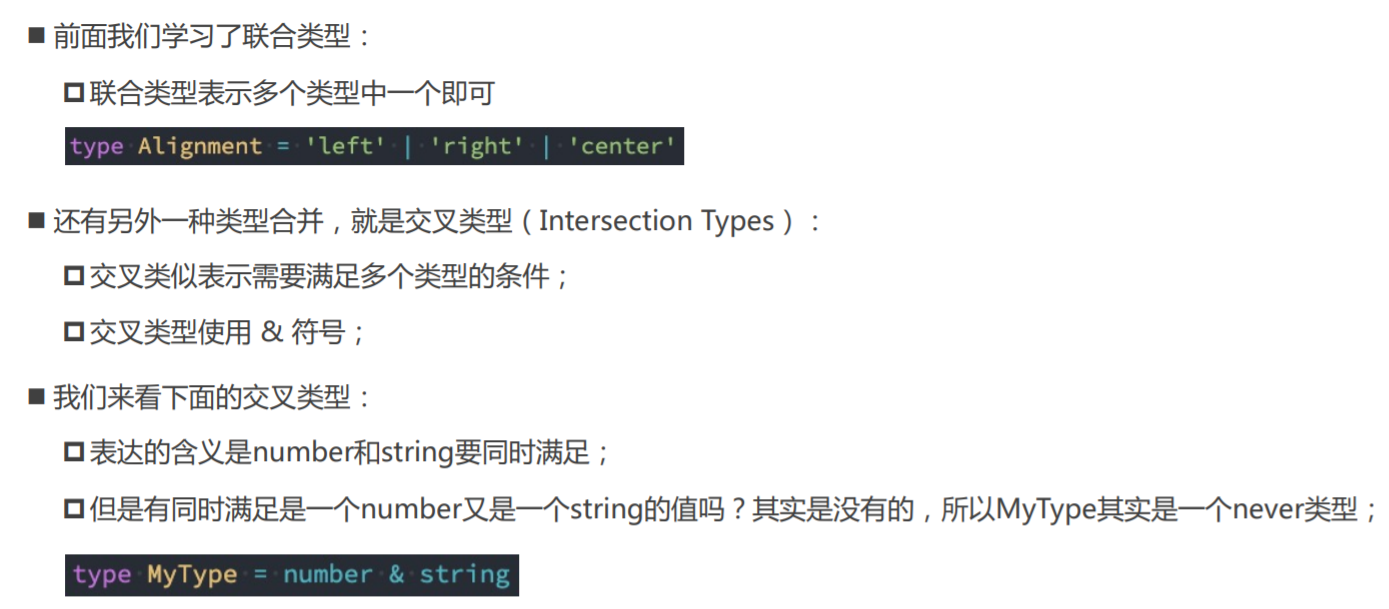
交叉类型的应用
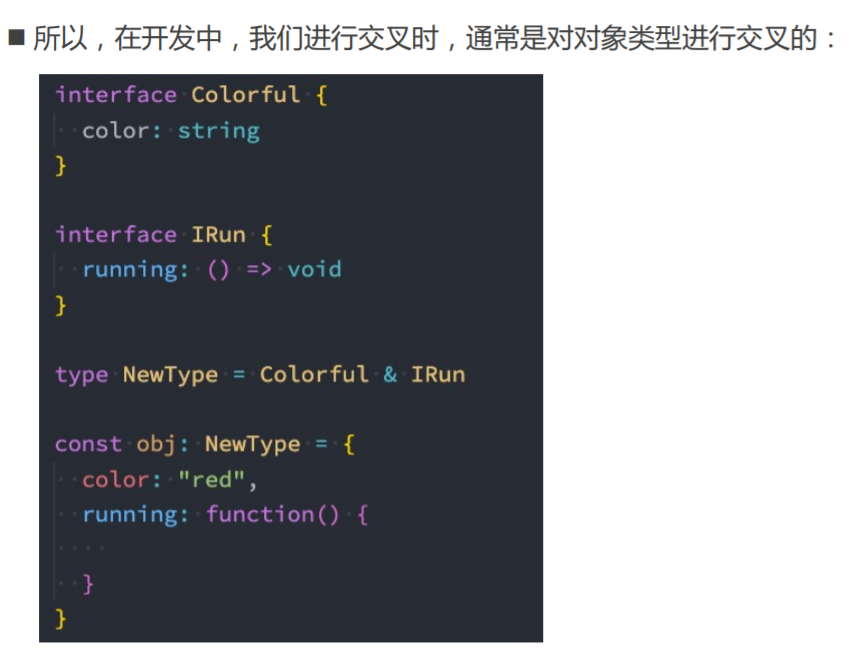
interface和type区别
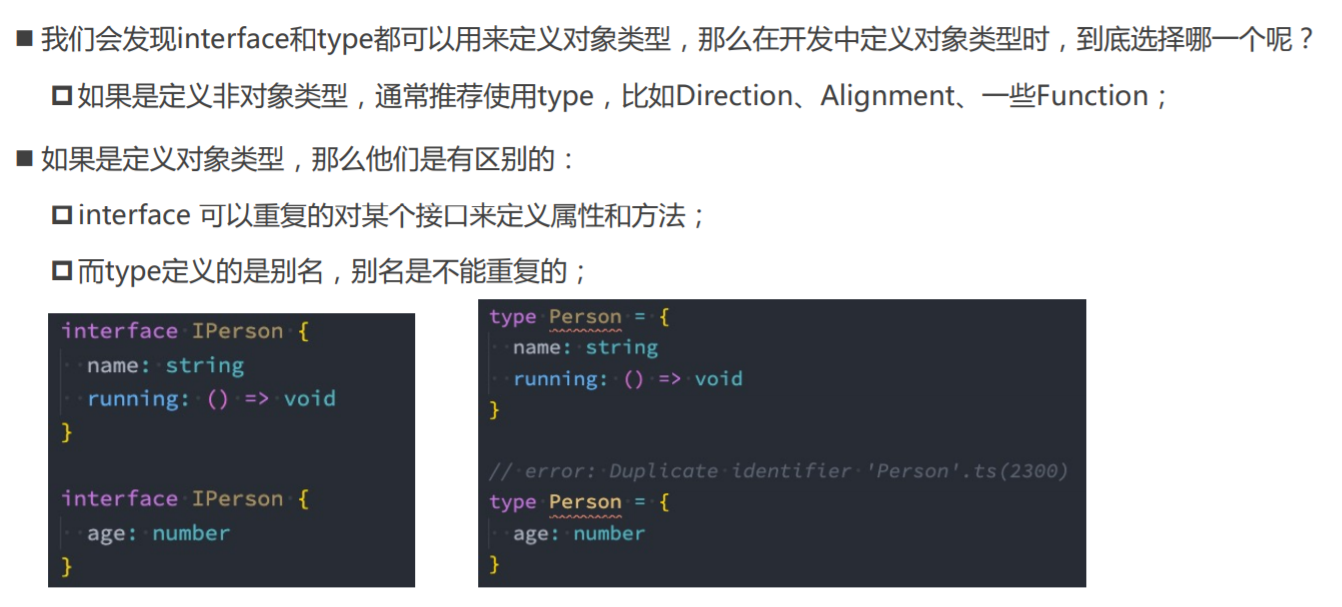
字面量赋值
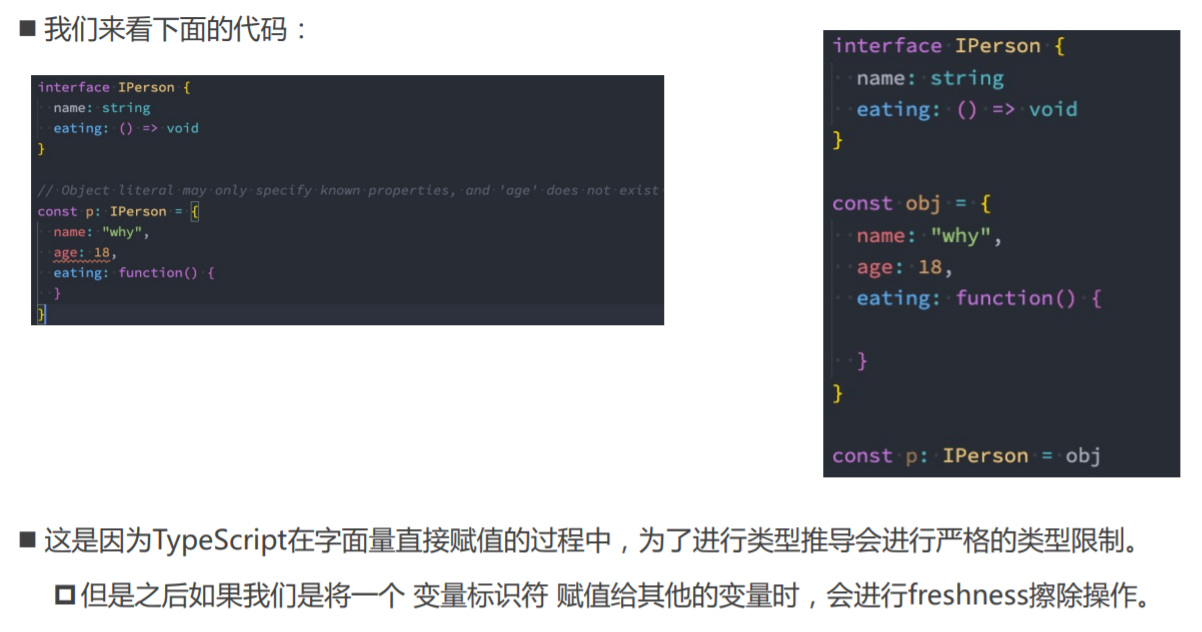
TypeScript枚举类型
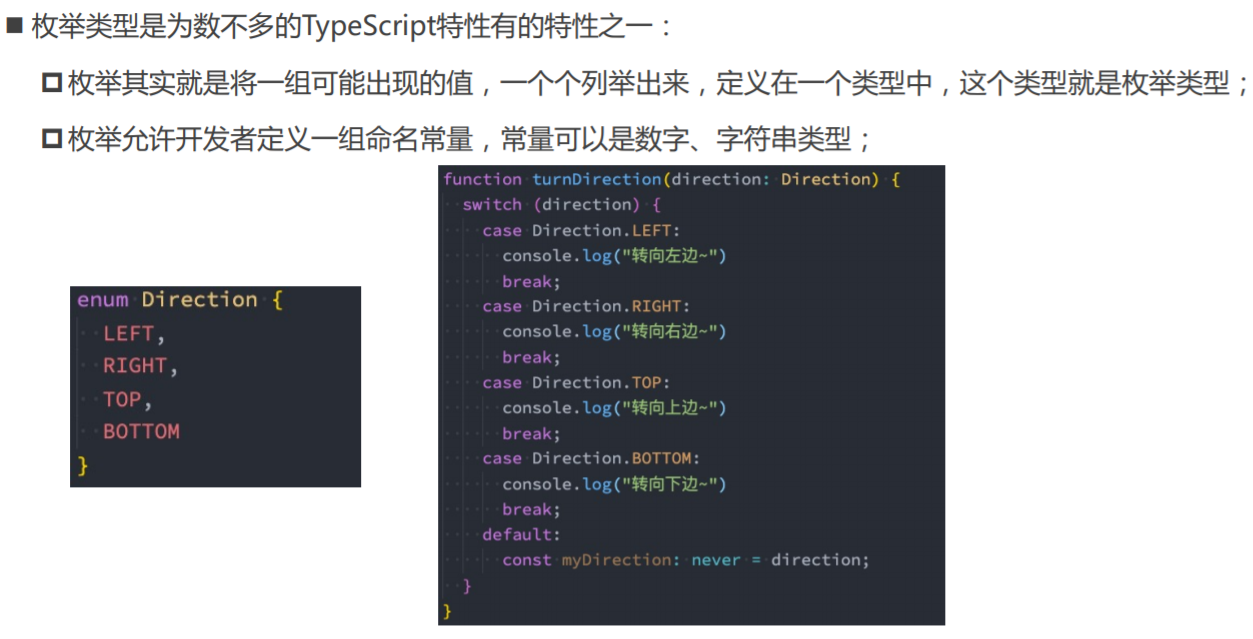
枚举类型的值
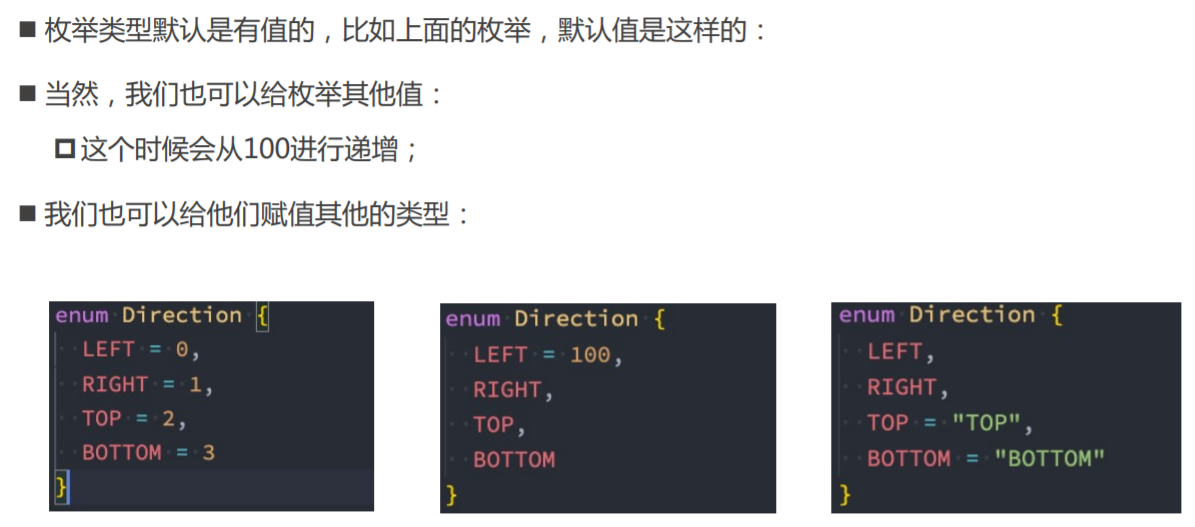
01_声明对象类型.ts
// 通过类型(type)别名来声明对象类型
// type InfoType = {name: string, age: number}
// 另外一种方式声明对象类型: 接口interface
// 在其中可以定义可选类型,也可以定义只读属性
interface IInfoType {
readonly name: string
age: number
friend?: {
name: string
}
}
const info: IInfoType = {
name: 'why',
age: 18,
friend: {
name: 'kobe',
},
}
console.log(info.friend?.name)
console.log(info.name)
// info.name = "123"
info.age = 20
02_索引类型.ts
// 通过interface来定义索引类型 【根据数据结构,推导出要定义的类型的结构。】
interface IndexLanguage {
[index: number]: string
}
const frontLanguage: IndexLanguage = {
0: 'HTML',
1: 'CSS',
2: 'JavaScript',
3: 'Vue',
}
interface ILanguageYear {
[name: string]: number
}
const languageYear: ILanguageYear = {
C: 1972,
Java: 1995,
JavaScript: 1996,
TypeScript: 2014,
}
03_函数类型.ts
// type CalcFn = (n1: number, n2: number) => number
// 可调用的接口 【interface定义对象类型更合适,函数类型推荐使用类型别名type,阅读性更强。】
interface CalcFn {
(n1: number, n2: number): number
}
function calc(num1: number, num2: number, calcFn: CalcFn) {
return calcFn(num1, num2)
}
const add: CalcFn = (num1, num2) => {
return num1 + num2
}
calc(20, 30, add)
04_接口的继承.ts
interface ISwim {
swimming: () => void
}
interface IFly {
flying: () => void
}
// 可以继承多个接口
interface IAction extends ISwim, IFly {}
const action: IAction = {
swimming() {},
flying() {},
}
05_交叉类型.ts
// 一种组合类型的方式: 联合类型
type WhyType = number | string
type Direction = 'left' | 'right' | 'center'
// 另一种组件类型的方式: 交叉类型
type WType = number & string
interface ISwim {
swimming: () => void
}
interface IFly {
flying: () => void
}
// 【定义对象类型用interface,函数、联合、交叉类型用类型别名type。】
type MyType1 = ISwim | IFly
type MyType2 = ISwim & IFly
const obj1: MyType1 = {
flying() {},
}
const obj2: MyType2 = {
swimming() {},
flying() {},
}
export {}
06_接口的实现.ts
// 【1、编写接口ISwim、IEat;2、编写Fish,实现ISwim、IEat;3、编写Pesron,实现ISwim;4、编写函数swimAction,调用参数的swimming方法;5、调用swimAction,传入Fish类、Person类。】
interface ISwim {
swimming: () => void
}
interface IEat {
eating: () => void
}
// 类实现接口
class Animal {}
// 继承: 只能实现单继承
// 实现: 【类】实现接口, 类可以实现多个接口
class Fish extends Animal implements ISwim, IEat {
swimming() {
console.log('Fish Swmming')
}
eating() {
console.log('Fish Eating')
}
}
class Person implements ISwim {
swimming() {
console.log('Person Swimming')
}
}
// 编写一些公共的API: 面向接口编程 【面向接口编程的前提:让类实现接口。】
function swimAction(swimable: ISwim) {
swimable.swimming()
}
// 所有实现了接口的类对应的对象, 都可以传入
swimAction(new Fish())
swimAction(new Person())
swimAction({ swimming: function () {} })
07_interface和type的区别.ts
// interface IFoo {
// name: string
// }
// interface IFoo {
// age: number
// }
// const foo: IFoo = {
// name: "why",
// age: 18
// }
document.getElementById("app") as HTMLDivElement // 【有内置的 Document类型。】
window.addEventListener // 【有内置的 Window类型】
interface Window {
age: number
}
// window.age = 19
// console.log(window.age)
// type IBar = {
// name: string
// age: number
// }
// type IBar = {}
interface IPerson {}
08_字面量赋值.ts
interface IPerson {
name: string
age: number
height: number
}
// const info = {
// name: "why",
// age: 18,
// height: 1.88,
// address: "广州市"
// }
// // freshness擦除: 【当把info赋值给p的时候,会去除info中多余的属性。不是真正删除属性,而是类型检测这一步做了 freshness擦除 操作。】
// const p: IPerson = info
// console.log(info)
// console.log(p)
function printInfo(person: IPerson) {
console.log(person)
}
// 代码会报错
// printInfo({
// name: "why",
// age: 18,
// height: 1.88,
// address: "广州市"
// })
const info = {
name: "why",
age: 18,
height: 1.88,
address: "广州市"
}
printInfo(info)
09_枚举类型的使用.ts
// type Direction = "left" | "Right" | "Top" | "Bottom"
enum Direction {
LEFT,
RIGHT,
TOP,
BOTTOM,
}
function turnDirection(direction: Direction) {
switch (direction) {
case Direction.LEFT:
console.log('改变角色的方向向左')
break
case Direction.RIGHT:
console.log('改变角色的方向向右')
break
case Direction.TOP:
console.log('改变角色的方向向上')
break
case Direction.BOTTOM:
console.log('改变角色的方向向下')
break
default:
const foo: never = direction
break
}
}
turnDirection(Direction.LEFT)
turnDirection(Direction.RIGHT)
turnDirection(Direction.TOP)
turnDirection(Direction.BOTTOM)
10_枚举类型的值.ts
// type Direction = "left" | "Right" | "Top" | "Bottom"
enum Direction {
LEFT = "LEFT",
RIGHT = "RIGHT",
TOP = "TOP",
BOTTOM = "BOTTOM"
}
let name: string = "abc"
let d: Direction = Direction.BOTTOM
function turnDirection(direction: Direction) {
console.log(direction)
switch (direction) {
case Direction.LEFT:
console.log("改变角色的方向向左")
break;
case Direction.RIGHT:
console.log("改变角色的方向向右")
break;
case Direction.TOP:
console.log("改变角色的方向向上")
break;
case Direction.BOTTOM:
console.log("改变角色的方向向下")
break;
default:
const foo: never = direction;
break;
}
}
turnDirection(Direction.LEFT)
turnDirection(Direction.RIGHT)
turnDirection(Direction.TOP)
turnDirection(Direction.BOTTOM)
export {}















